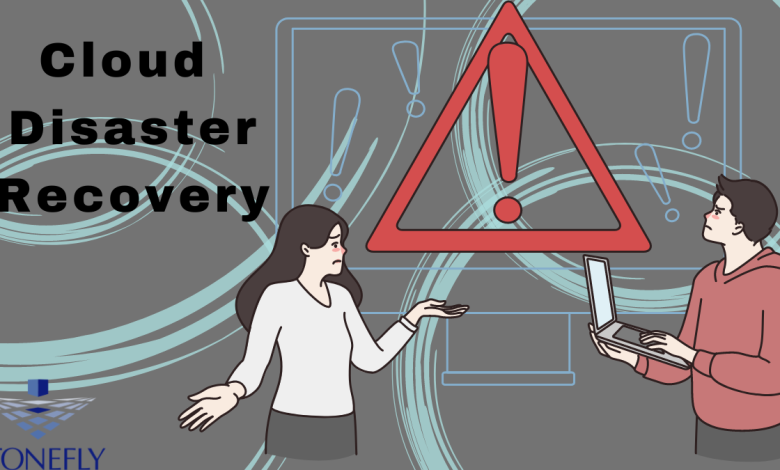A Comprehensive Overview of Cloud Disaster Recovery

Cloud disaster recovery (DR) is becoming increasingly popular among businesses of all sizes. As the technology matures and more solutions become available, organizations have the ability to protect their data and operations from a wide range of potential disasters. In this article, we’ll discuss what cloud disaster recovery is, how it works, its benefits and challenges, and key considerations when implementing a cloud-based DR strategy.
What is Cloud DR?
Cloud disaster recovery (DR) is a form of off-site data and application protection that uses cloud computing technology to replicate critical data and applications for use in the event of an IT system failure or other unforeseen disaster. The cloud allows organizations to store their important business information and applications online.
How Does Cloud DR Work?
Cloud disaster recovery works by replicating data and applications to a secure, off-site cloud environment. The replicated data is stored in the cloud, and when a failure or disaster occurs, users can access it from any location with an internet connection.
15 Benefits of Cloud DR
There are many benefits to using cloud-based disaster recovery, including cost savings, improved scalability and flexibility, faster recovery times, and increased security.
1. Cost Savings:
By using cloud-based disaster recovery, organizations can save money on the cost of traditional on-site data protection solutions. This is because cloud providers often offer more affordable storage and bandwidth capabilities than what is available with traditional IT infrastructure.
2. Improved Scalability and Flexibility:
Cloud disaster recovery allows organizations to easily scale their data protection solution up or down as needed, ensuring that they can accommodate changing business needs without having to make costly investments in additional IT infrastructure.
3. Faster Recovery Times:
Cloud-based DR solutions enable faster disaster recovery times than traditional methods. As the replicated data is stored in a secure cloud environment that can be quickly accessed from any location with an internet connection.
4. Increased Security:
Cloud-based DR solutions are highly secure and use encryption to ensure that data remains confidential at all times. This helps protect businesses from unauthorized access or malicious attacks.
5. Improved Data Availability:
Cloud-based DR solutions improve data availability, as replicated data is stored offsite and can be quickly accessed in the event of an IT system failure.
Medent EHR Review – Is Medent Right For Your Practice?
6. Easier to Manage:
Cloud-based DR systems are typically easier to manage than traditional on-site solutions. As they can be monitored and managed remotely from any location with an internet connection.
7. Reduced Risk of Human Error:
With cloud-based DR, organizations are less likely to experience data loss or corruption due to human error, as the system is automated and requires minimal user intervention.
8. Improved Data Backup Capabilities:
Cloud-based DR solutions allow organizations to easily back up their critical data. Applications on a regular basis, ensuring that they are always protected against potential disasters.
9. Increased Business Resilience:
Cloud-based DR solutions make it easier for organizations to quickly recover from any disaster or system failure, helping them maintain business operations and customer trust.
10. Improved Collaboration and Mobility:
Cloud-based DR solutions also enable improved collaboration and mobility, as users can access data from anywhere with an internet connection. This makes it easier for teams to work from any location. It ensures that everyone has the latest version of documents or files they need.
11. Increased Data Protection:
Cloud-based DR solutions protect data with encryption and authentication, ensuring that only authorized users can access the data. This helps businesses maintain the security of their critical information.
12. Improved Compliance:
Cloud-based DR solutions are compliant with industry regulations, such as HIPAA and GDPR. Helping organizations to remain compliant at all times.
13. Access to Expert Support:
Cloud-based DR solutions provide organizations with access to expert support from the cloud provider. Allowing them to quickly address any issues or concerns they may have.
14. Improved IT Infrastructure:
By using a cloud-based DR solution, organizations can leverage the latest IT infrastructure and technologies to ensure that their data is safe and secure. This helps them reduce the risk of data loss or corruption, as well as improve their overall disaster recovery capabilities.
15. Increased Automation:
Cloud-based DR solutions also enable increased automation, allowing organizations to easily manage their DR processes without having to manually intervene. This can help to streamline the disaster recovery process and save time and resources.
Conclusion
Using a cloud-based DR solution can help organizations of all sizes protect their data and applications in the event of an IT system failure. By leveraging the latest technologies, including encryption and authentication, cloud-based DR solutions provide organizations with increased security and improved data availability. In addition, they enable faster recovery times, improved compliance, access to expert support and increased automation.
FAQs
1. What is a cloud-based disaster recovery solution?
A cloud-based disaster recovery (DR) solution is a type of IT system that enables organizations to quickly recover their data and applications in the event of an IT system failure or disaster. It typically involves the replication or duplication of critical data and applications offsite, allowing for faster access and retrieval in the event of a disaster.
2. How does cloud-based DR work?
Cloud-based DR works by replicating or duplicating critical data and applications offsite. This ensures that organizations have access to their data in the event of an IT system failure or disaster, allowing them to quickly retrieve it and resume business operations. Cloud-based DR solutions also typically provide encryption and authentication, ensuring that only authorized users can access the data.
3. What are the benefits of using a cloud-based DR solution?
The main benefits of using a cloud-based DR solution include increased security, improved data availability, faster recovery times, improved compliance, access to expert support, improved IT infrastructure and increased automation.
4. What are the different types of cloud-based DR solutions?
The main types of cloud-based DR solutions include public cloud, private cloud, hybrid cloud and disaster recovery as a service (DRaaS).
5. Is a cloud-based DR solution right for my business?
It depends on your organization’s specific needs. If your organization relies heavily on IT systems for its operations and needs to ensure business continuity in the event of an IT system failure or disaster, then a cloud-based DR solution is likely the best option.



